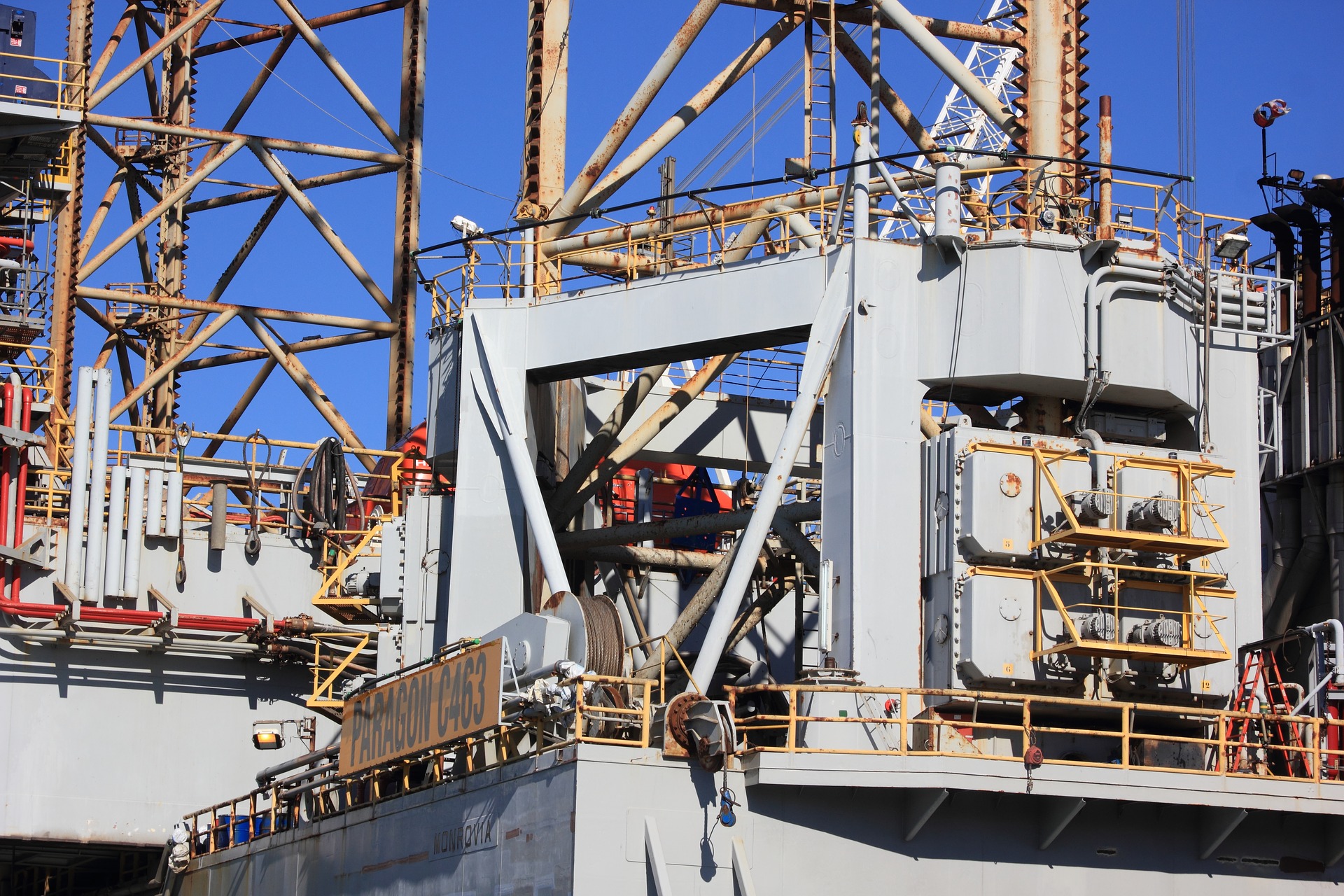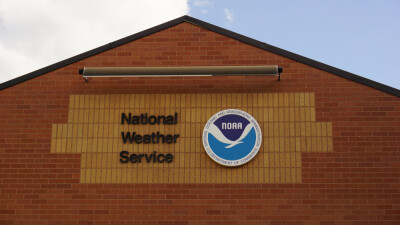When it comes to flying a drone for commercial purposes, regulation is a topic that continues to complicate matters for operators all over the world. In the United States, some of that confusion was straightened out when Part 107 went into effect, but as we’ve shown, it’s an issue that’s just as important for operators in Europe and across the entire world.

Sky-Futures CEO James Harrison
The reason for such concern stems from the focus many government agencies have placed on establishing thresholds around commercial drone operations, but some have questioned whether or not these sorts of legal constraints are necessary. Few have made that point as eloquently as
Sky-Futures CEO James Harrison did in his recent post, which is titled
Drones don't need regulations. In it, Harrison asks why a government agency should be concerned about adequately insured operators, but also discusses the role industry leaders need to take around setting up sensible standards and guidance.
The issues and questions Harrison lays out are especially poignant because they’re coming from someone who is deeply involved in actually making this technology work. Just this month, multinational oil and gas company Eni
announced they signed a three-year contract with Sky-Futures, while the company’s
software and
training options continue to create new opportunities for users of all types and sizes.
We’ve laid out
why standards will be critical to UAV adoption, but I wanted to further discuss the issues around regulation and benchmarks that Harrison mentioned in his piece. Below you’ll find the answers to every single question I threw out to him which explore regulatory challenges, where guidelines should stem from, what kind of benefits can come from a focus on creating standards and much more.
Jeremiah Karpowicz: You’ve previously detailed how and why the team at Sky-Futures deeply immersed themselves in the industries you were looking to serve in order to make sure you were able to solve real business problems. How have you been able to quantify the benefits of that immersion? Are any of those benefits directly or indirectly related to the best practice blueprint that you’ve created?James Harrison: We believe that to be able to understand and solve the actual business problems, we had to first experience them. The results are a tight focus on solving the biggest issues that are affecting the industries we work in such as the inspection of vertical infrastructure in Telecommunications, Wind, Bridges, Oil and Gas, and Utilities. By being able to validate (and disprove!) initial assumptions we have created a powerful blueprint for Enterprise who want to maximise the efficiency of their assets using drones.
For example, we discovered that having an offshore oil platform offline costs US $7m per day and that there are 60 stakeholders of inspection data for a cell tower annually. This understanding helped us to create services, training and software to solve these issues today, and to plan our roadmap for the future.
What can you say about working through regulatory challenges throughout that immersion process? How do you view those challenges now that you’re actively dealing with different rules and regulations as you operate across the globe?When an industry is created, there are invariably a few years of education and proving to do. We built up our expertise in dangerous industrial environments. This helped us to have credibility with the legislators and regulators, as the clients themselves are rightly risk adverse and have a large emphasis on safety.
We were also able to replicate our operations globally as our clients are not restricted to a single country. We have worked extensively with civil aviation authorities as well as industry and government bodies around the world to help create their regulations and strategy. However, the challenge persists and industry needs to be pragmatic and take safety cases to the regulators.
With Part 107 in the United States and the ability to get CAA Permission for Commercial Operations (PfCO) in the UK, many have been able to take to the sky for the first time for commercial purposes. These regulations have created opportunities, but in what ways have they also created new challenges?Today the biggest challenge is new operators being taken on by companies without understanding their operations, safety records, safety management systems and processes. This is important as incidents and accidents can set back the progress we are seeing today. That’s why we believe that working with clients and other professional operators we can set standards and guidelines that are accessible to all to mitigate this and advance the adoption of this great technology.
Picking up on that, you laid out in great detail why drones don’t need regulations, and talked about the work Sky Futures has undertaken to create industry guidance for the oil & gas sector. Is that an endeavor you undertook because of what you thought it could do for Sky-Futures, or because of what you believed it could do for the oil & gas industry as a whole?We are a technology business first and foremost. Therefore, it’s incredibly important to create a permissive environment to enable the safe adoption of this technology into the inspection industry. We want every type of industrial inspection to utilize drones, and if we or other companies can help achieve that we’re all winning. That’s why we have a training school in both the US and the UK and software to create powerful inspection reports that anyone can use.
In your article, you asked why a government should care if an operator crashes a drone into a bridge or flies into a wind turbine, and I imagine the response to that from government advocates would be that it’s an issue of safety in terms of the literal fallout that the people underneath that bridge would have to deal with. Is that a fair response to your question?If an operator has done their risk assessment and method statement, got their insurance, Part 107, satisfied the clients requirements etc., and then had an incident where they crashed into a bridge, that will lead to an unhappy client but shouldn’t be a problem for government. The operator fills out and submits an incident report, does an internal investigation and then brings the results of that learning into their future operations. Ideally the results are shared with the client too, so that everyone in the community learns from this.
Are any of the guidelines that you laid out in your best practice blueprint for companies who want to utilize drones for commercial industrial inspection relevant to professionals in other sectors?The guidelines are general enough to cover anyone looking at the inspection of industrial infrastructure, however there is also best practice that translates across all industries. We are releasing a new software product called Flightdeck to the market in March ‘17 that takes this knowledge and experience directly into the hands of drone pilots and managers. It is a tool that provides audit, compliance, job management and is a fantastic tool for companies that want to deliver professional and safe operations.
This, alongside Expanse Inspection, provides powerful web based tools for inspection businesses utilizing drones and for enterprise that have in-house drone inspection teams or want to manage 3
rd parties to ensure consistency and compliance with their own company standards.
Does it makes sense for regulation to be industry specific? That is to say, should professionals in oil and gas who are using a drone have to adhere to a different set of rules than someone flying a drone on a farm? If so, won’t this create a cumbersome regulatory environment, both for regulators and operators?Regulation should be overarching and broad, and guidelines derived from industry. That way there is a clear distinction between a drone operating on a farm in the middle of Ohio, and a drone operator inspecting a cell tower next to a highway next to the 101 in California. The industry specific guidelines help to baseline safety and then the operators in each scenario provide an additional safety case, if required, that is pertinent to the specific job.
It seems to me the issue here is around how to approach a regulatory threshold. Given your experience and dedication, forcing Sky-Futures to deal with overzealous local government personnel is a waste of everyone’s time, but the same can’t be said of someone who just got their Part 107 certificate or PfCO. How can we approach sensible regulation when we’re dealing with operators that have so many different levels of experience and dedication? This is where industry specific guidelines are really helpful. They can highlight where the operator needs to be above and beyond the basic standards. We don’t want to see a patchwork of local rules, as that’s not helpful for anyone, but a wider standardisation. By having a risk based approach, new operators that have just got into the industry and are attempting to do a cell tower inspection next to a busy road have to follow the same process as anyone else. Based on their experience and mitigation plan a clear answer on permission can be granted.
What can you say about the financial impact for an organization that dedicates time and resources to come up with standards and guidance for an entire industry? Do you think some organizations view this as a zero-sum game, in terms of resources that are dedicated to creating these standards and guidance are ones that are not focused on revenue, which means they’re either expendable or ultimately unnecessary?Currently companies are not competing for market share as the drone market is nascent. We are all in ‘education’ mode. Therefore standards and guidelines help risk averse industries adopt the technology faster. In that sense it’s not a zero sum game.
Yes, we are putting resources into the creation of these standards but we are also known as the company that has worked hard to deeply understand the industry issues, so we have a leadership position. That is a good place to be.
 The recent piece on NBC’s Today program that showcased the Sky-Futures team was a great look at a practical application of drone technology. How will making the general public more aware of and comfortable with drone technology impact the future of regulation?
The recent piece on NBC’s Today program that showcased the Sky-Futures team was a great look at a practical application of drone technology. How will making the general public more aware of and comfortable with drone technology impact the future of regulation?There is a lot we need to do as an industry to showcase the safe and practical application of the technology. Intel have been pioneers here by having 2 operators controlling 300 drones, in multiple countries. That brings the technology to a wider audience and speeds acceptance. Our showcase on the Today program highlighted the work that we do training the emergency services and first responders in the US and the UK. Helping first responders utilise this technology to save lives is amazing and really helps with practical application of the technology and regulation. The more positive use cases that can appeal to the public will improve the perception of the technology and translate into practical and pragmatic regulation.
What advice would you have for a company that is providing professional UAV services that wants to help set standards that make sense? Should they reach out to regulators directly, or try to collaborate with other professionals, or try to work with advocates that have already begun this process, regardless of the success they have or haven’t found?If nothing exists today we would advocate speaking to end clients and industry bodies and point to the work that has been done here. Having clear return on investment for end clients and a requirement for the technology within the industry is key. Without a sound business case there will be zero impetus for clients and industry bodies to get involved.
The work that we do in promoting the safe and professional use of drones commercially does mean that we are well placed as a thought leader in the industry. We have large corporate clients globally getting in touch to help with their drone strategy and to understand what’s possible today.

 The recent piece on NBC’s Today program that showcased the Sky-Futures team was a great look at a practical application of drone technology. How will making the general public more aware of and comfortable with drone technology impact the future of regulation?There is a lot we need to do as an industry to showcase the safe and practical application of the technology. Intel have been pioneers here by having 2 operators controlling 300 drones, in multiple countries. That brings the technology to a wider audience and speeds acceptance. Our showcase on the Today program highlighted the work that we do training the emergency services and first responders in the US and the UK. Helping first responders utilise this technology to save lives is amazing and really helps with practical application of the technology and regulation. The more positive use cases that can appeal to the public will improve the perception of the technology and translate into practical and pragmatic regulation. What advice would you have for a company that is providing professional UAV services that wants to help set standards that make sense? Should they reach out to regulators directly, or try to collaborate with other professionals, or try to work with advocates that have already begun this process, regardless of the success they have or haven’t found?If nothing exists today we would advocate speaking to end clients and industry bodies and point to the work that has been done here. Having clear return on investment for end clients and a requirement for the technology within the industry is key. Without a sound business case there will be zero impetus for clients and industry bodies to get involved.The work that we do in promoting the safe and professional use of drones commercially does mean that we are well placed as a thought leader in the industry. We have large corporate clients globally getting in touch to help with their drone strategy and to understand what’s possible today.
The recent piece on NBC’s Today program that showcased the Sky-Futures team was a great look at a practical application of drone technology. How will making the general public more aware of and comfortable with drone technology impact the future of regulation?There is a lot we need to do as an industry to showcase the safe and practical application of the technology. Intel have been pioneers here by having 2 operators controlling 300 drones, in multiple countries. That brings the technology to a wider audience and speeds acceptance. Our showcase on the Today program highlighted the work that we do training the emergency services and first responders in the US and the UK. Helping first responders utilise this technology to save lives is amazing and really helps with practical application of the technology and regulation. The more positive use cases that can appeal to the public will improve the perception of the technology and translate into practical and pragmatic regulation. What advice would you have for a company that is providing professional UAV services that wants to help set standards that make sense? Should they reach out to regulators directly, or try to collaborate with other professionals, or try to work with advocates that have already begun this process, regardless of the success they have or haven’t found?If nothing exists today we would advocate speaking to end clients and industry bodies and point to the work that has been done here. Having clear return on investment for end clients and a requirement for the technology within the industry is key. Without a sound business case there will be zero impetus for clients and industry bodies to get involved.The work that we do in promoting the safe and professional use of drones commercially does mean that we are well placed as a thought leader in the industry. We have large corporate clients globally getting in touch to help with their drone strategy and to understand what’s possible today.














Comments